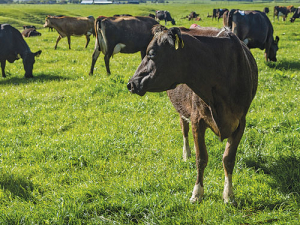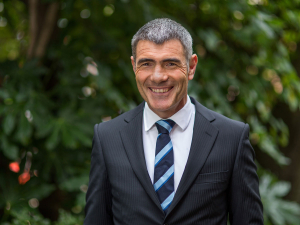As a result, cows must now successfully conceive in a much shorter period of time than they had previously.
It should therefore come as no surprise that numbers of cows found empty this autumn have continued to increase with empty rates now about double where they were 5 years ago. Once a rarity, it is now not uncommon to find herds with empty rates exceeding 15%.
When facing such numbers, it seems logical to blame adverse weather events associated with climate change for the increase and a challenging mating season like we have just experienced certainly doesn’t help the situation. In reality, the main reason for the increasing empty rates is basic mathematics.
On average, the conception rate in cows is quoted to be approximately 53%. Based on this fact, a farmer deciding to finish mating after 10 weeks as opposed to 13 weeks will tend to double their empty rate with all things being equal.
For example, a herd with 50 non-pregnant cows after 10 weeks of mating, if allowed to mate for a further 3 weeks (an average oestrus cycle of a cow) would provide all 50 non-pregnant cycling cows another chance of conceiving. Based on this 53% or 26 cows would conceive, leaving only 24 cows empty.
The impact to the business through costs associated with these higher empty rates soon add up. There are the obvious additional costs associated with purchasing pregnant replacements which are further compounded by the hidden cost of limiting culling options and needing to retain ‘poor quality’ cows that would be otherwise culled. These ‘poor quality’ cows represent the low producers and ‘problem’ cows with underlying health issues (Mastitis/ high cell counts, bad feet or susceptibility to metabolic disorders). Ultimately these ‘problem’ cows need greater animal health resources to prop them up through lactation.
It therefore has to be a ‘no brainer’, focussing efforts to reverse the trend when double digit empty rates start becoming the norm.
As already mentioned, when it comes to mating, time is of the essence. Shorter mating periods require farmers to have all their ducks in a row, more now than ever before and failing to plan is really just planning to fail!
Time and time again analysis reveals the same common causes in herds falling behind the ball. Ranking amongst some of the greater issues is the failure to achieve target Body Condition Score (BCS) 5.0 at calving. Also, excessive condition loss post calving is still a major issue.
Much of this stems from the ongoing confusion derived from an endless assortment of information of differing quality surrounding feeding practices of modern dairy cows.
The good news is, all is not lost and with a little planning and action, significant improvements can be made. Personally, I have witnessed significant gains to both reproductive performance and profitability in local herds that have been proactive. However, I cannot stress enough, it is critical to act now in time to affect next seasons results. Leaving it to dry off, or even worse drafting of low BCS springers is way too late.
If you are watching your empty rates creep up and recognise you need to make improvements, take time now to discuss your reproductive performance and your herds’ nutritional plan with your Veterinarian, Farm Advisor or Nutritionist.
• Greg Jarratt is a vet and director of Matamata Veterinary Service.
















